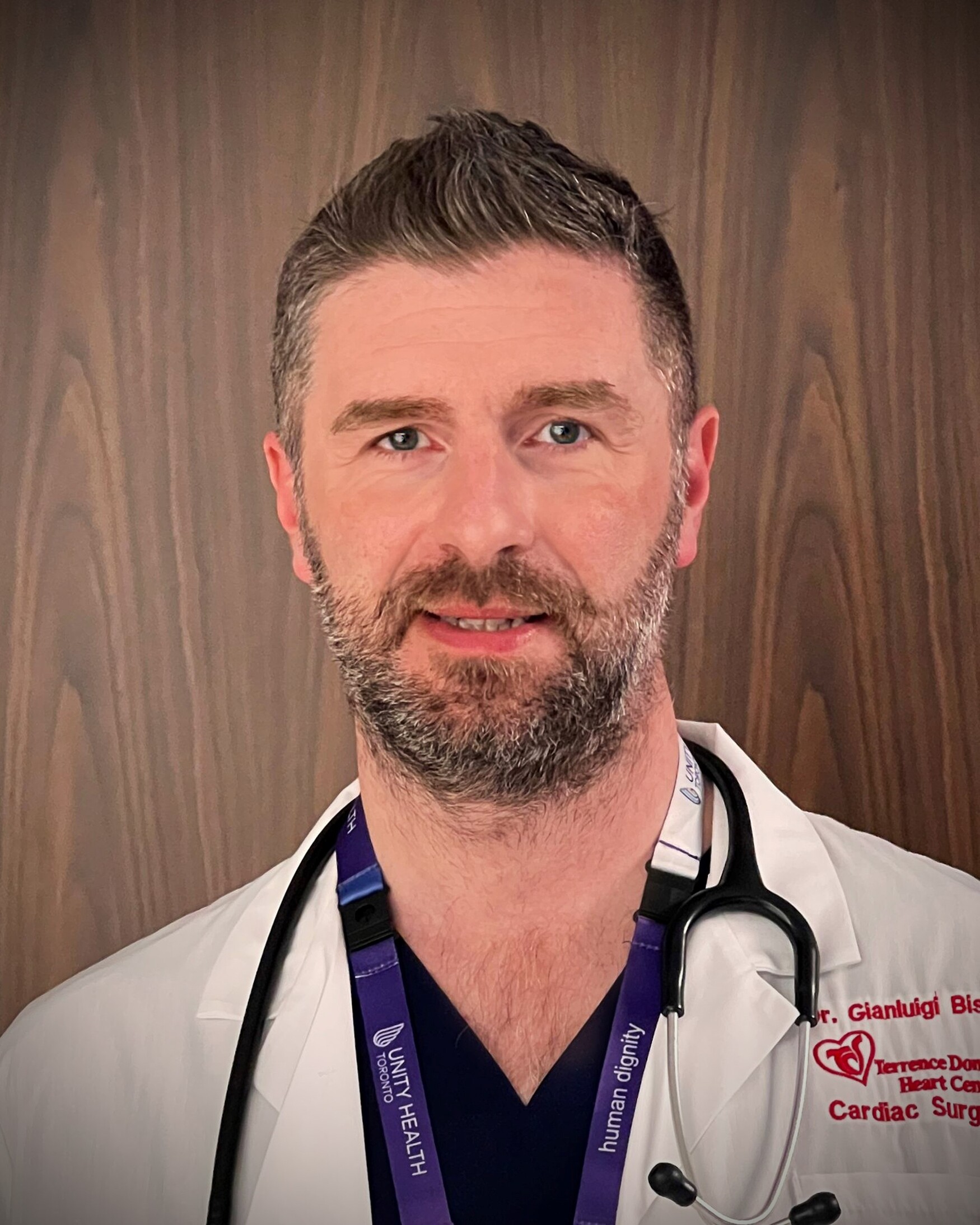Main Second Level Navigation
Breadcrumbs
- Home
- News & Events
- Recent News
- Mending Broken Hearts: New Frontiers in Cardiac Surgery
Mending Broken Hearts: New Frontiers in Cardiac Surgery

Born and educated in Italy, Dr. Gian Bisleri moved to Canada in 2016 with a mission: to introduce new cardiac surgery techniques to the next generation of Canadian surgeons. Dr. Bisleri is now an associate professor of surgery at the University of Toronto’s Temerty Faculty of Medicine and a cardiac surgeon-entrepreneur at St. Michael’s Hospital.
As a surgeon-entrepreneur, he both treats patients and develops innovative devices that are used in surgical care (he holds two U.S. patents for novel endoscopic surgical tools). Dr. Bisleri is one of only a handful of cardiac surgeons in the country specializing in minimally-invasive cardiac surgery — specifically in repairing leaky valves (like the mitral and tricuspid) and treating irregular heartbeats (i.e. atrial fibrillation). He introduced the hybrid approach that combines localization of the origins of heart rhythm disturbances on the inner and outer surfaces of the heart muscle in collaboration with the arrhythmia team (the only surgeon offering such approaches in Canada to date). He has also performed the largest series of Cox Cryo-Maze procedures in the country which uses a surgical approach to treat atrial fibrillation. Today, Dr. Bisleri shares how his journey in medicine began, the importance of minimally-invasive cardiac surgical approaches, and his hopes for the future of this emerging field.
What is minimally-invasive cardiac surgery?
Minimally-invasive cardiac surgery uses small incisions to reduce the invasiveness of open-heart surgery. Typically, we avoid opening the front of the chest and instead enter from the side. This can be done with a two-inch incision or with even smaller keyhole incisions (thoracoscopically). In some cases, we are even able to do the procedure in a beating heart fashion, meaning we don't stop the heart or open the heart as we would normally do. But the ultimate goal of minimally-invasive cardiac surgery is to provide the same advantages of traditional cardiac surgery while minimizing the level of trauma that is caused to patients.
How is this different from traditional cardiac surgery?
Cardiac surgery has historically been performed using a long incision on the front of the chest called a median sternotomy. This is a very safe and effective access, but it's also very invasive. Psychologically, the scar is a sign that patients will carry for the rest of their lives, reminding them that they had heart disease and were operated on. There is an important physical functional component when recovering after such incisions, but there is also a psychological component for patients.
As a surgeon, what appeals most to you about this minimally-invasive technique?
I think that we are very gifted as physicians to be able to deal with such an amazing organ and to do amazing work to fix broken hearts. But at the same time this can be very traumatic for patients. Minimally-invasive surgery is a way to provide something more friendly to patients when undergoing cardiac surgery.
How did your journey as a surgeon-entrepreneur start?
I’ve always had this drive toward innovation. I like to challenge avenues of thinking — to find and develop new ways to reduce trauma for patients. One of my passions has also been engineering. Minimally-invasive cardiac surgery requires a lot of technological tools, so I enjoy working and developing new instruments with bioengineers.
You are one of the few surgeons in the country specializing in minimally-invasive cardiac surgery. Why do you think there are so few minimally-invasive cardiac surgeons in Canada?
Historically, there hasn’t been a lot of focus or a lot of teaching opportunities for minimally- invasive techniques. The goal for me, in coming to Canada, was to bring these important techniques — not only for patients in Toronto and beyond, but also to help the next generation of Canadian surgeons.
Why is minimally-invasive surgery so important?
Many are not even aware that minimally-invasive surgery is an option available to patients, but it can be impactful on a broader scale, both in terms of research and innovation. It will provide significant results not just in the future, but now and will impact countless people and their families living in Toronto, across the country and on a global level.
Why the University of Toronto?
The University of Toronto is one of the most prominent institutions in the world. I moved to U of T to bring minimally-invasive cardiac surgery to the next level. The level of impact that I can have here — at an institution with international reach — is absolutely unique. It’s a very exciting time because we have the opportunity to provide something that is missing in our population with impact not only nationally, but globally.
The University of Toronto is raising funds to support research and education in minimally-invasive cardiac surgery. What would donor support mean for your field?
Currently, there are very few, if any, funds that support work specifically in the area of minimally-invasive cardiac surgery — not only at U of T, but anywhere in Canada. Donor support would ensure we can conduct research that will contribute to the refinement and development of new techniques and devices. It also would give us the opportunity to enhance educational opportunities — allowing us to recruit more trainees to come and learn from both a research and clinical standpoint. It would move our field forward significantly, changing the landscape of cardiac care forever.
News


